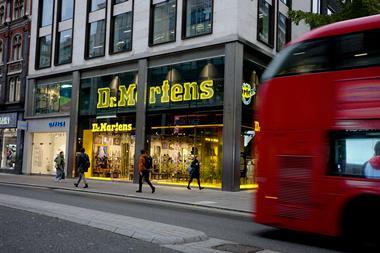Paul Smiddy: I take no solace from the official December and January sales figures. Demand will fall a lot further as unemployment spreads into the wider economy
With brickbats being hurled at bankers from every corner of the globe, can I just reinforce that I am a stockbroker, rather than a banker? On that basis, I will emerge from the bomb shelter…
Over the past few years most UK retailers have enhanced their profitability by shifting more sourcing to Asia and enjoying the benefit of sterling’s appreciation against the US dollar – up 21 per cent through 2006 and 2007. The resulting rise to margins has rarely been spelled out, but has nonetheless been important.
The collapse of the pound since last July has been nothing short of precipitous – down 30 per cent against the dollar. Hedging policies have been thrown into a very sharp focus for those interested in the sector’s earnings outlook.
To generalise wildly, most retailers’ forward cover expires by midsummer. Thereafter many buying directors are facing a potential 30 per cent rise in input costs. Not a pleasant thought when margins have already taken a beating from the inexorable effects of operational gearing on poor trading.
Obviously there is pressure to shift sourcing to countries with less punchy currencies, such as Turkey. There will be attempts to induce Chinese suppliers to accept pounds or indeed that new currency, the ABTD (Anything But The Dollar).
Of course, there were those unfortunates that thought they had good hedging in place, but it disappeared in a puff of smoke when their Icelandic banks folded. Painful.
Once those avenues have been exhausted, I expect retailers to resort to default behaviour – demand that the supplier takes the pain. However, this magazine and others have unsurprisingly started to report an increasing rate of corporate failures of suppliers as well as retailers themselves.
Some factory owners in China seem prepared to price at marginal cost at the moment, but overall I would be cautious about the degree to which one can assume suppliers will shoulder this burden.
So how much of the net cost increase to pass on in higher selling prices? I take absolutely no solace from the official December and January sales figures. Demand will fall a lot further as unemployment spreads into the wider economy.
Many retail sub-sectors will encounter a lot of consumer resistance to higher prices. Clothing will be particularly interesting: shoppers have become used to continual falls in clothing prices and a reversal will be a rude awakening.
But there is a silver lining for some retailers. After years of foreigners viewing London as being too expensive to visit (something to which we Londoners are inured), they have suddenly found the economics of their British travel budget transformed.
There were more foreign souls than Anglo-Saxons when I visited Westfield last week. This year the melee around Buck House has started early. Just remember that the Buckingham Palace shaker, or the plastic British bobby, were made in China and probably paid for (down the line) in dollars.
Paul Smiddy is head of retail research at HSBC

























No comments yet